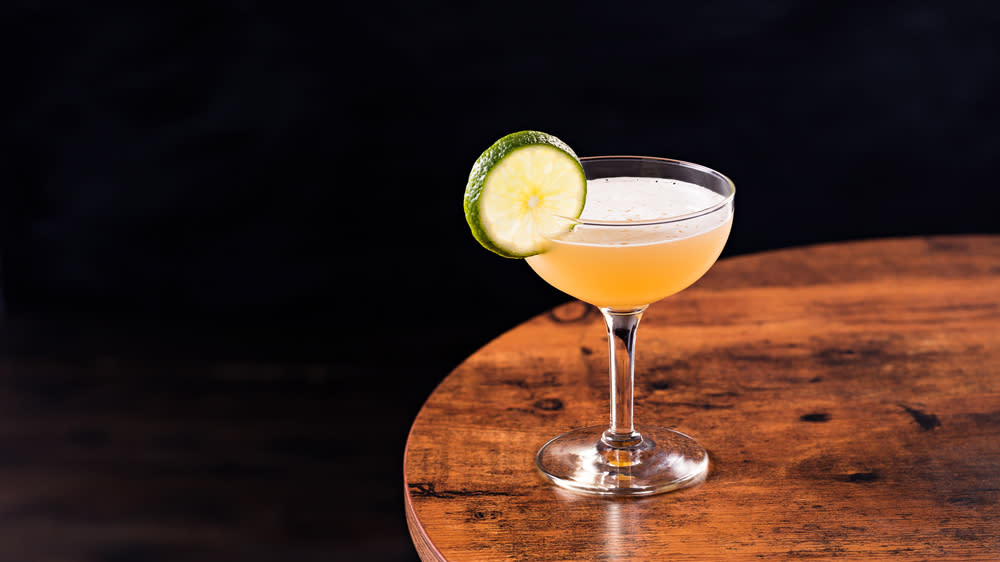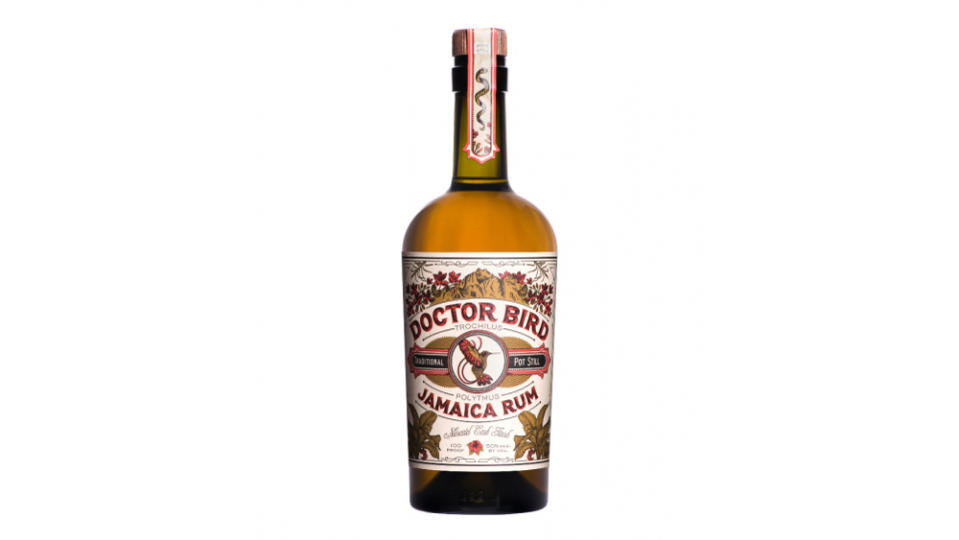How to Make a Brooklynite, a Daiquiri Made With Funky Rum, Honey and Bitters

If a cocktail could somehow embody a person from Brooklyn, what would it look like? Well, we have to answer that question with a question—Brooklyn when?
We know how they’d answer a hundred years ago because we have the Brooklyn cocktail, invented in or around 1908, and which is, like the borough itself at the time, a derivation of the Manhattan but every bit its worthy peer—a strong, slightly esoteric mix of rye, vermouth, maraschino and Amer Picon. If invented today, on the other hand, a “Brooklynite” would obviously be a carbon-neutral can of single-origin CBD-infused adaptogens containing trace amounts of naturally occurring alcohol from the kombucha process. But for the Brooklynite cocktail, we have to split the difference— it comes to us in the mid-1940s, after the war but before the Dodgers left for LA, when Brooklyn was still a manufacturing hub and the working class could afford the brownstones.
More from Robb Report
How to Make a Japanese Cocktail, the Cognac and Orgeat Classic With a Forgotten History
How to Make a Chocolate Martini, the Decadent Cocktail That's Brilliant When Done Right
Meet the Scottish Distiller That's Bringing Premium Rum to the Land of Whisky
The Brooklynite was an invention of the bar at the Stork Club, the most famous nightclub in New York. The Stork was, for a time, the epicenter of the New York social scene, the Studio 54 of its day. It was exclusive, snobbish even—the message to the staff, scrawled on a backroom chalkboard, was “if you know them, they don’t belong at the Stork Club”—but for the right kind of socialite, the exclusivity is part of the thrill. Among those for whom the door was always open was the journalist and bon vivant Lucius Beebe, who in 1946 was commissioned to compile the club’s cocktails and culture into The Stork Club Bar Book, “a cocktail book to end cocktail books” it claimed, with some 350 recipes amid lengthy meditations on drinks, drinking and, of course, the various splendors of the Stork Club.
It is surprisingly engaging for a cocktail book, with ample, somewhat baroque commentary alongside many of its recipes. The Manhattan, for example, is put up front as a “morning” cocktail and its entry enjoys nearly a whole page of notes and explanation. Our Brooklynite, by contrast, gets no commentary at all and is not even in the body of text but in the appendix, cocktails “suggested by members of the staff.” It is the creation of Eddie Whittmer, then the maitre’d, and is composed of Jamaican rum, honey, lime juice and a dash of bitters.
We’ll never know specifically why it’s named the Brooklynite. I feel like it fits 1940s Brooklyn in that it’s solid and delicious, diverse and distinct without being showy, though I’m probably reading too much into it. It also makes sense that a status-obsessed Manhattan joint would relegate the Brooklynite to the unadorned appendix. But take a little care in its execution and you’ll find the Brooklynite a delightful little drink and among the better things to make with a bottle of Jamaican rum. The honey does an admirable job of couching the rum’s heavy funk. Additionally, rum and lime have been best friends since before you met either of them, and the bitters add some welcome front-palate spice. And the best part is that you don’t need to wait behind a velvet rope in Midtown or ride a unicycle into Williamsburg to have one.
Brooklynite
2 oz. Jamaican rum
0.75 oz. lime juice
0.75 oz. honey syrup
1 dash bitters
Add all ingredients to a cocktail shaker with ice. Shake hard for eight to 10 seconds and strain into a cocktail glass or coupe.
NOTES ON INGREDIENTS

Rum: This specifically calls for Jamaican rum, which is heavy and funky and honestly a little weird—but that’s absolutely perfect here. The honey does a surprisingly good job of absorbing the aggressiveness of the Jamaican rum, but I love that flavor, so my favorite rum I tried was the Doctor Bird Jamaica Rum. Also good would be the Plantation Xaymaca or the Hamilton’s Jamaican Pot Still Black Rum (normally you’d reach for Smith & Cross at a time like this, and it was good, but not as good as it could’ve been). That said, not everyone loves this flavor, so with the right bitters (see below), any aged rum will work.
Honey Syrup: Honey turns into a rock when it touches ice, so what we do in bars is make honey syrup: 2:1 by weight, honey to warm or hot water and stir 30 seconds or so until it’s mixed. If you don’t have a scale, the volume measurement would be 3:1 honey to water.
Bitters: Bitters were the big surprise of this recipe for me. I hold it as an article of faith that Angostura Bitters are always good and almost always best—and indeed Angostura is called for by name in the recipe. That said, I thought that Angostura clashed with this drink. It keeps it from greatness. The more allspice and clove-driven Bitterman’s Jerry Thomas Bitters, however, with the Doctor Bird rum, made the best Brooklynite I’ve ever had. They’re good bitters and worth picking up for this and other drinks, with a sharper spice profile right up front. A similar profile would be the Fee Brother’s Old Fashioned Bitters, if you can’t find the Bitterman’s, though I’ll admit I didn’t try Fee Brothers with this recipe, so caveat emptor.
Best of Robb Report
Why a Heritage Turkey Is the Best Thanksgiving Bird—and How to Get One
The 10 Best Wines to Pair With Steak, From Cabernet to Malbec
Sign up for Robb Report's Newsletter. For the latest news, follow us on Facebook, Twitter, and Instagram.

